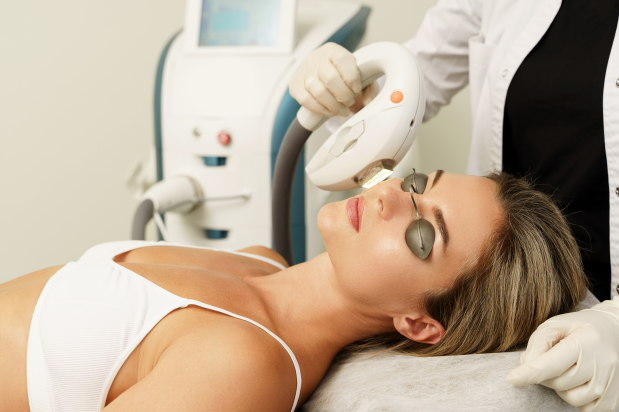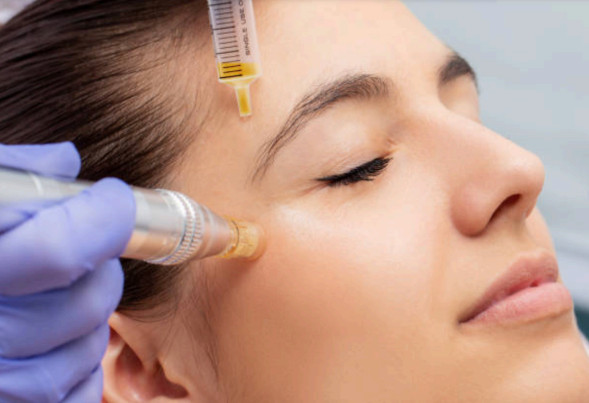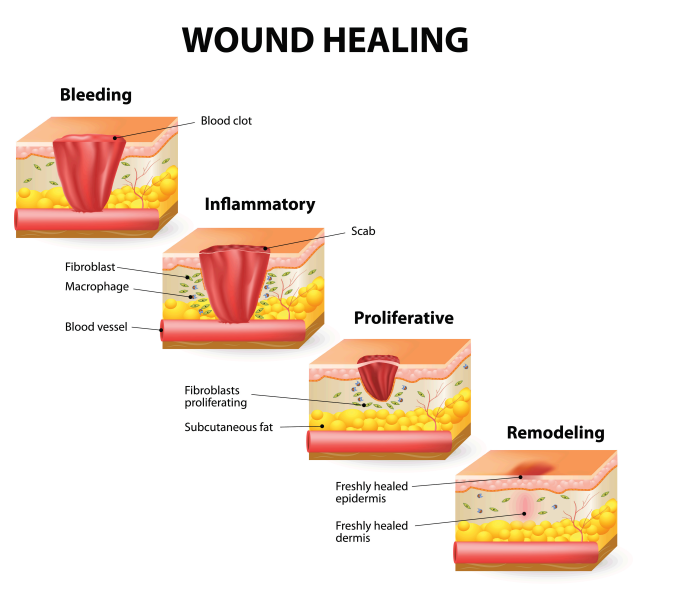
Shedding The Light On IPL
Jennifer Miller / August 08, 2022
If dark marks and redness are all you see in the mirror, IPL might just lighten these skincare burdens. Read on to discover how amazing this light technology can be!
What is IPL?
IPL, which stands for intense pulsed light, is a quick, noninvasive, in-office treatment. It is a non-laser light therapy which emits a broad spectrum pulse of light ranging from 400-1200 nm. Laser, on the other hand, produces a single wavelength of light creating a single beam.
IPL is utilized to treat a range of concerns which includes birthmarks, pigmentation, acne, and wrinkles with the use of interchangeable filters.
Commonly known as a photofacial, IPL targets redness or dark spots, reducing discoloration and pigmentation without harming your skin’s surface. Additionally, it can also be utilized for hair reduction. When IPL is flashed against the skin, the light energy is absorbed by the pigment cells heating them up which eventually breaks the pigment down. The working principle is based on Selective Photothermolysis (SP) wherein heat targets only the pigment while sparing the surrounding tissue. SP breaks down dark spots, freckles, hair follicle, and acne causing bacteria. Modern IPL machines now have cooling integration to help protect the skin surface that is in direct contact with device from overheating.
Benefits
IPL can minimize or reduce the following:
• Signs of photo damage
• Hyperpigmentation
• Redness from rosacea
• Varicose veins
• Freckles
• Birthmarks
• Unwanted hair in face and body
Contraindications
- Suspicion of skin cancer in the area to be treated
- If you take photosensitizing drugs
- Light sensitivity
- Pregnancy or nursing
Preparation
• Avoid all sunlight exposure.
• Avoid all forms of tanning - spray tanning and tan beds.
• Avoid waxing and hair threading. For hair reduction IPL, you want to keep the hair follicle intact as this is the target chromophore.
• If you have history of cold sores, take anti-viral medication 24-48 hours prior to procedure. This will help prevent herpetic outbreak. You will need to contact your primary medical provider (PMD) for this.
• Discontinue retinoids, exfoliants, or any harsh topicals as these can increase your skin sensitivity putting you at risk for adverse reactions.
Procedure
Arrive with clean bare skin, free of make up and lotions. Most clinics will provide a wipe for make-up removal prior to start of your appointment. A cool gel will be applied onto clean skin. It is good practice to do a spot test in an inconspicuous area. When spot test looks good, your aesthetic provider may proceed with the actual IPL treatment. Your provider will apply light pulses to your skin area with the IPL device in a systematic fashion.
Throughout the treatment, you must wear protective eyewear to avoid eye damage. Usually not necessary, topical numbing may be offered. The light flashes are described as feeling like warm rubber band snapping on skin.
The procedure should take around 20-30 minutes based on the size of treatment area. And depending on your desired results, you will need around three to six treatments, although hair treatments often need more. Each appointment should be spaced about one month apart to allow your skin to heal in between.
Who is IPL photorejuvenation for?
This treatment is ideal for any individual wanting a quick and efficient alternative to laser treatments. If you have skin discoloration or unwanted hair that you want to get rid of, IPL may zap them away.
Side effects
While IPL has an array of benefits, ensure you it is good to know the common side effects that may occur with this treatment.
Many people experience mild swelling and redness following IPL treatment, although this usually fades after a few days.
Adverse Reactions
Blistering, burns, post inflammatory hyperpigmentation (often shortened to PIH), and hypopigmentation are rare adverse reactions particular with brown to dark skin types, such as those of Fitzpatrick 4-6. Thus, if you have a brown to dark skin type, it’s especially crucial to find someone who is professionally trained and experienced with IPL.
Post-Care
- However, while minor side effects may occur and cause the area to be sensitive, you will usually be able to resume normal activities.
- Avoid sun exposure after IPL for a minimum of 2 weeks.
- Avoid retinoids, exfoliants, and harsh topicals for at least a week.
- As with other skin rejuvenating treatments, sunscreen protection is a must.
Cost
The cost will vary depending on size of treatment area and number of sessions. Also, location of clinic will have bearing on cost. A clinic in San Francisco and Manhattan would cost more. Insurance does not cover this treatment as this is considered cosmetic. Package purchasing will typically bring the cost per session down.
Conclusion
With a fast recovery time and efficient removal of marks and hair, this treatment could be the right choice for you! With IPL, mirror mirror on the wall will reflect a fairer and brighter complexioned YOU.
References
Goldberg DJ. Current trends in intense pulsed light. J Clin Aesthet Dermatol. 2012 Jun;5(6):45-53. PMID: 22768357; PMCID: PMC3390232.
Sadick NS, Weiss R. Intense pulsed-light photorejuvenation. Semin Cutan Med Surg. 2002 Dec;21(4):280-7. doi: 10.1053/sder.2002.36902. PMID: 12512651.
Michael I. Kulick, MD, Photorejuvenation: Using Intense Pulsed Light Technology in a Cosmetic Surgery Practice, Aesthetic Surgery Journal, Volume 21, Issue 3, May 2001, Pages 255–258, https://doi.org/10.1067/maj.2001.116243

